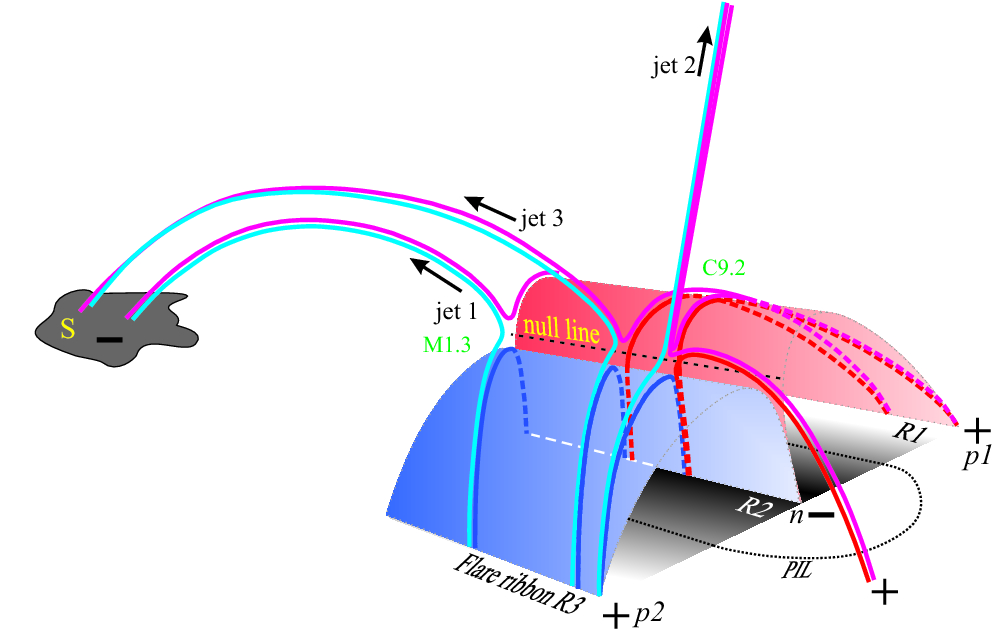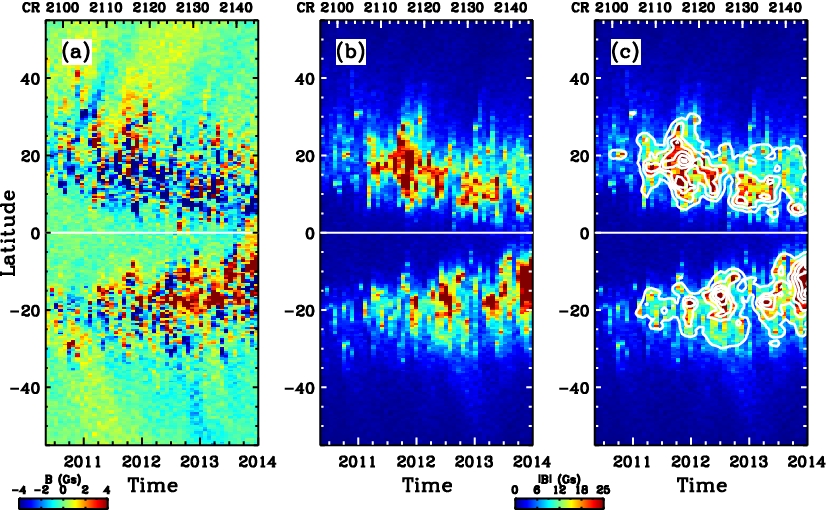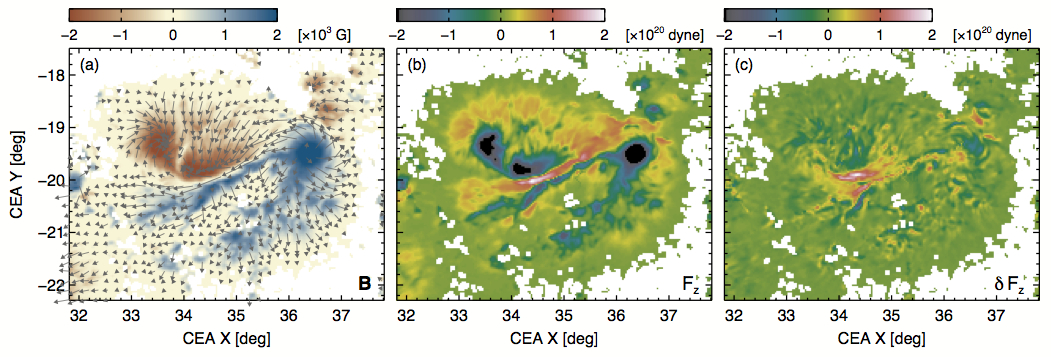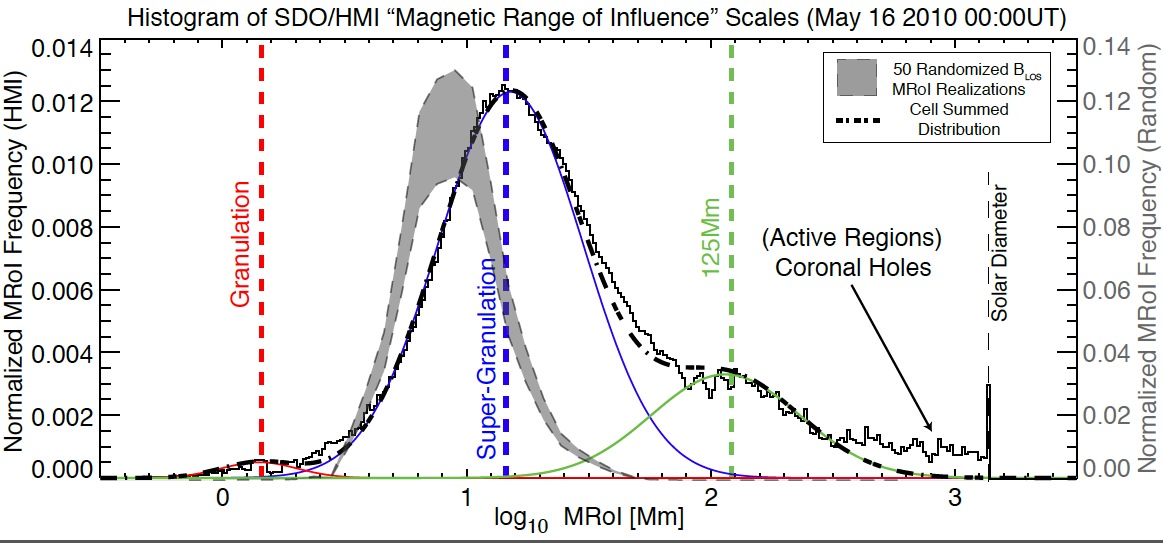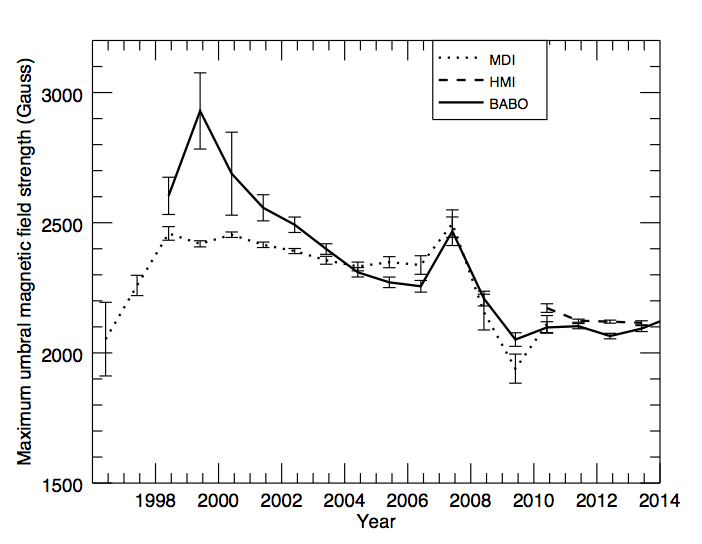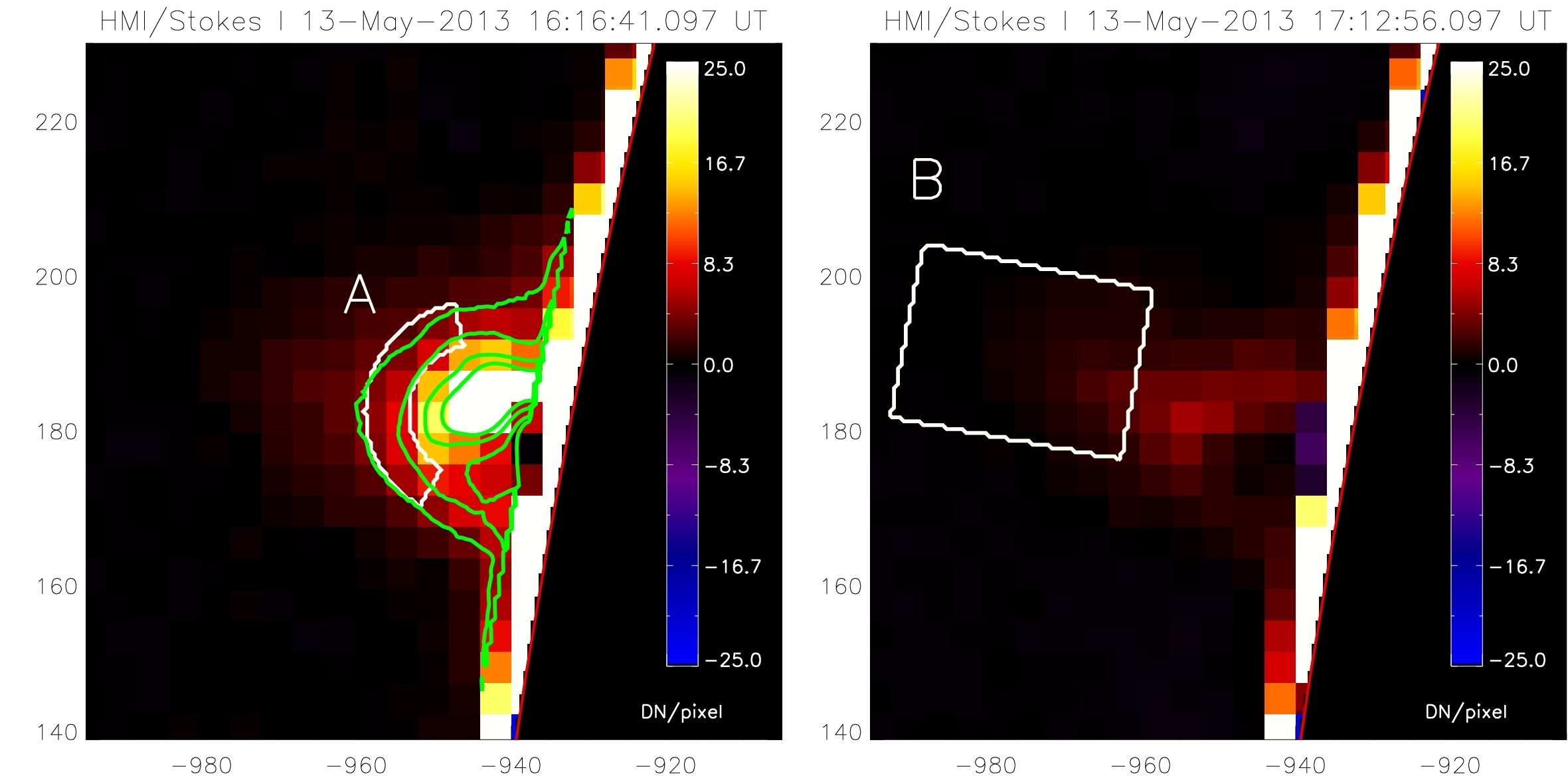Category Archives: Magnetic Field
20. Solar Meridional Flow in the Shallow Interior during the Rising Phase of Cycle 24
19. The CGEM Lorentz Force Data from HMI Vector Magnetograms
18. Correlations between sunspots and their moat flows
16. Spatial-Variance Magnetic Synoptic Maps
Bertello and collaborators at NSO have made a first attempt to estimate some of the uncertainties in magnetic synoptic maps and evaluated their impact on coronal and heliospheric models. They found that accounting for the statistical uncertainties arising from the distribution of image pixels contributing to each bin in the synoptic map may produce a noticeable change in the results obtained from these models.
15. Potential field source surface “breathes” over the course of the solar cycle
13. “G-nodes” Offer a New Way to Peek into the Sun’s Interior
We have seen that the quiescent photospheric magnetic field is composed of multiple connective scales. The observed scales range from a few megameters to those that are 100 –250 Mm in scale. We expect that the latter of these scales belongs to a spatially large, deep and hence slowly overturning convective flow — one that possibly reaches to the bottom of convection zone.
11. The long-term trend in magnetic fields of sunspot umbrae
I investigate the possible long term decrease in umbral magnetic field strengths from 1998-2006. Whereas a decrease of 800 Gauss in umbral magnetic fields has been reported between 1998 and 2012, the HMI and MDI data indicate a decrease of only around 300 Gauss. The continuing availability of the excellent HMI data set will allow us to continue to refine this study as solar cycle 24 evolves.

